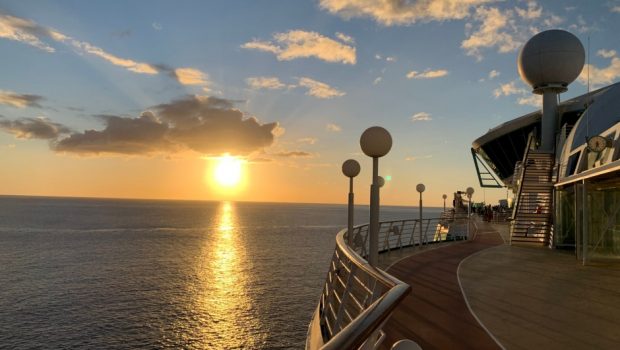What to do in Luxembourg for a weekend? If you like fortifications and art, you’re in for a treat!
Luxembourg is a small state in Europe, nestled between France, Germany and Belgium. Culturally it’s a combination of those influences, and its cuisine has been described as the quality of French cuisine and the quantity of German cuisine.
Saturday
We started our trip after a night at the NH Luxembourg with a bus ride from the airport, discovering after we’d bought our tickets that all public transport was free on Saturdays. I’d read that all public transport was going to be free from March but hadn’t seen any indication of Saturday’s being free, but the tickets were only €2 each, so it wasn’t the end of the world.
We made our way into town and checked into our hotel, the Simoncini, and then headed out into the grey January day. Luxembourg, the city, is situated overlooking the Alzette River, steep cliffs leading down to the river and the terrain perfect for defensive fortifications.
The area below the cliffs is called Grund and is a UNESCO World Heritage site as a result of the medieval streets, buildings and left over walls. The city at the top of the cliffs reflects newer buildings – 18th and 19th Century instead of the 14th and 15th down the bottom.
Monument of Remembrance
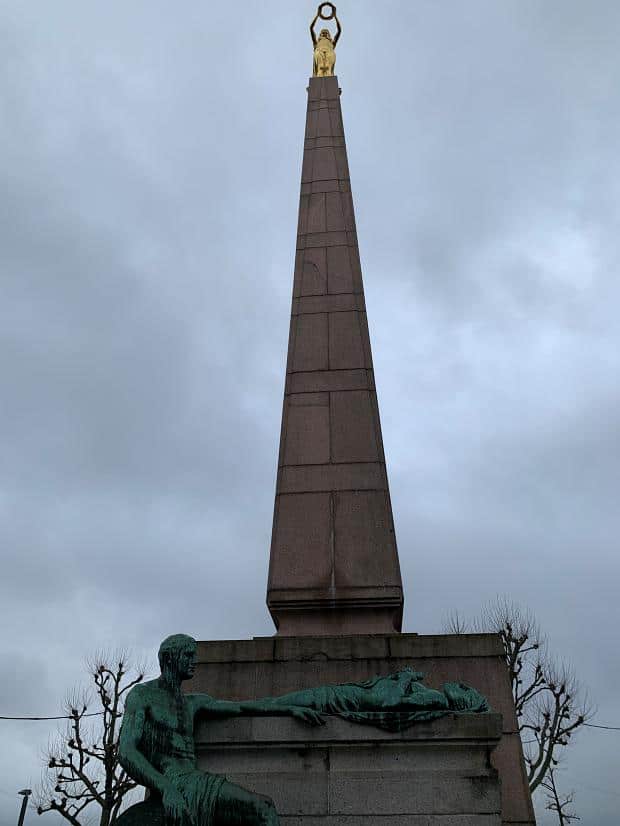
We started our walk at the Monument du Souvenir (Monument of Rememberance) – an obelisk commemorating the dead of WWII. The view across the river was quite stunning, with the Ponte Adolphe bridging the Petrasse River far below.
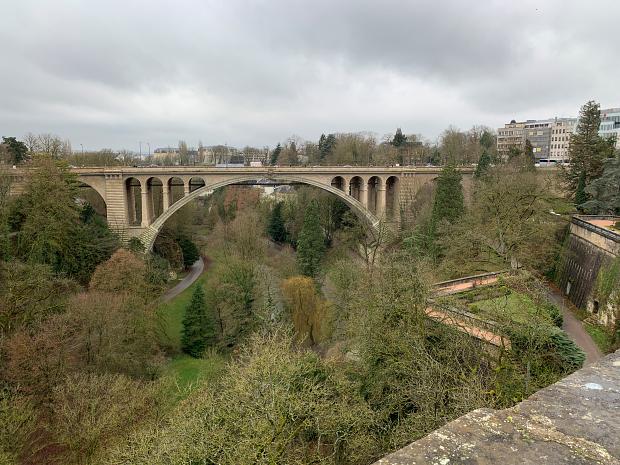

Notre Dame Cathedral
Next door to the Monument was the Notre Dame cathedral, reflecting the nation’s Catholic faith. The bells from the Cathedral were heard frequently during our stay, starting at 5am! Confusingly there was more activity on the quarter hour than there was on the half hour and we never quite got to the bottom of why 4:45pm was more important than 4:00pm.
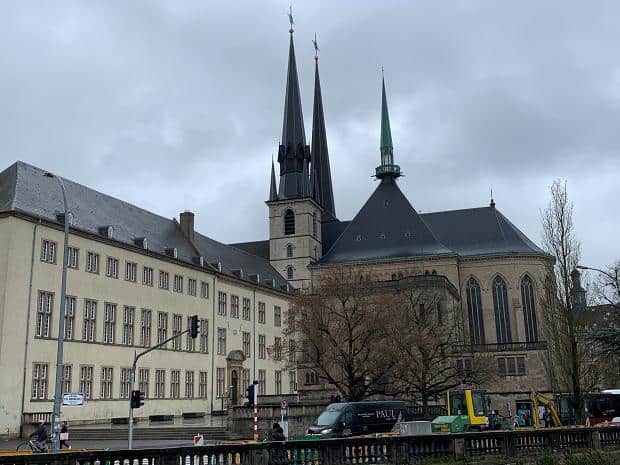
Palace
On past the Cathedral we went, passing the Palace as a light rain started to fall. Two soldiers guarded the Palace, armed with rifles and sheltering from the elements in little guard huts, not much bigger than a telephone box. Every now and again one or other of them would go for a walk along the front of the building, returning with much stomping to his post.
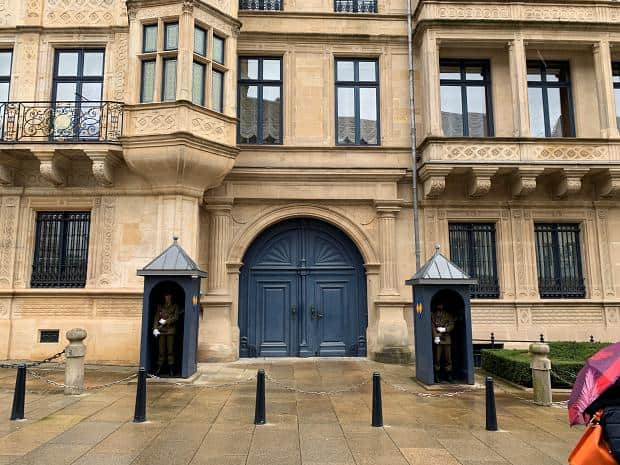
Casements du Boc
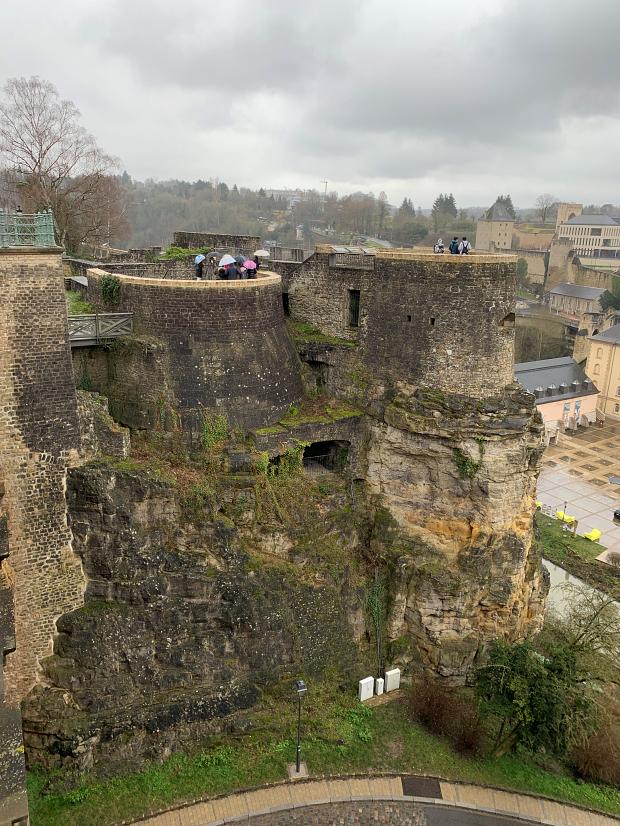
The Casements du Boc are the fortifications on a promontory around which a bend of the Alzette River wends its way through the city. The road ramps down until you’re at river level, staring up a the curve of the railway line as it arcs across the city on a stony bridge.
We crossed the Alzette and walked along the northern shore, past a picturesque weir and through suburban streets which combined early 19th and 20th century houses.
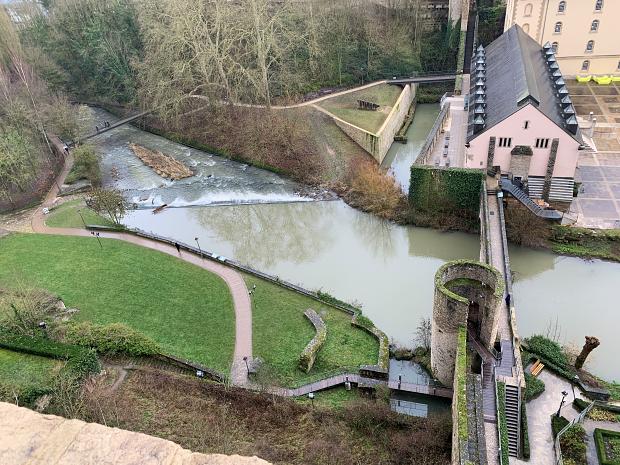
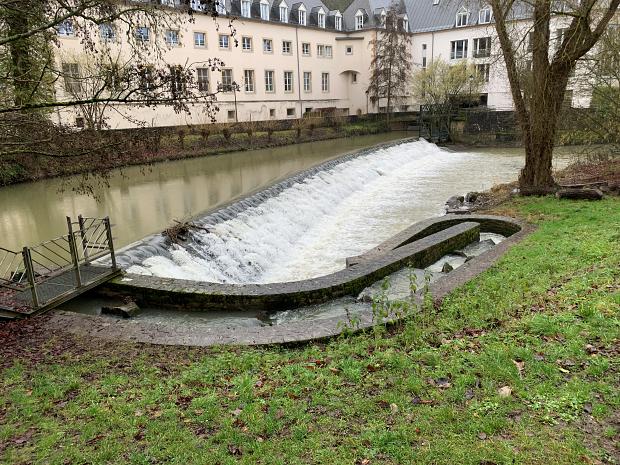
Tours Vauban
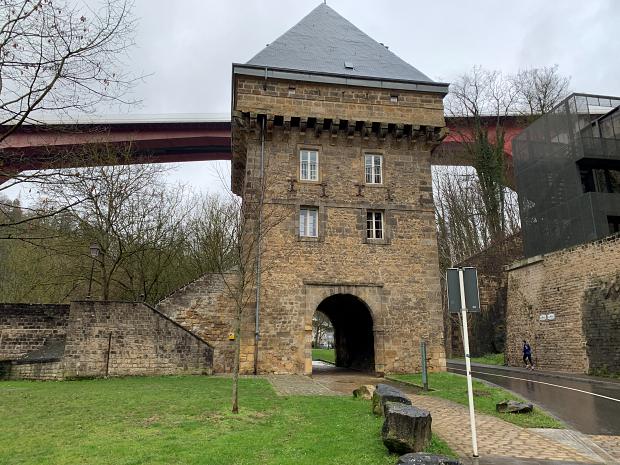
Before long the medieval returned with a lovely old bridge on our left. Guarding it was an imposing tower, and on each side of the river the fortification continued, on our side disappearing into the trees on the hill after allowing the road to pass and on the other side of the river interrupted by a gatehouse.
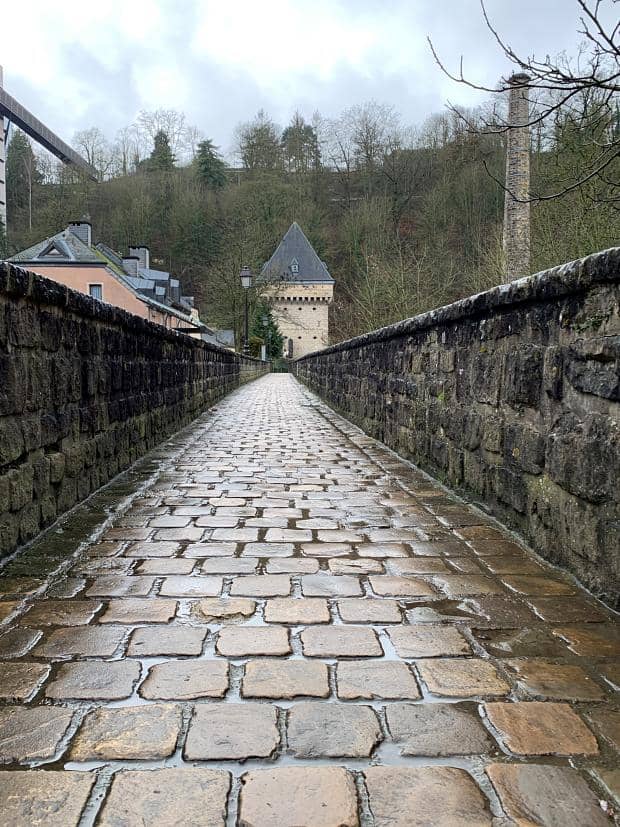
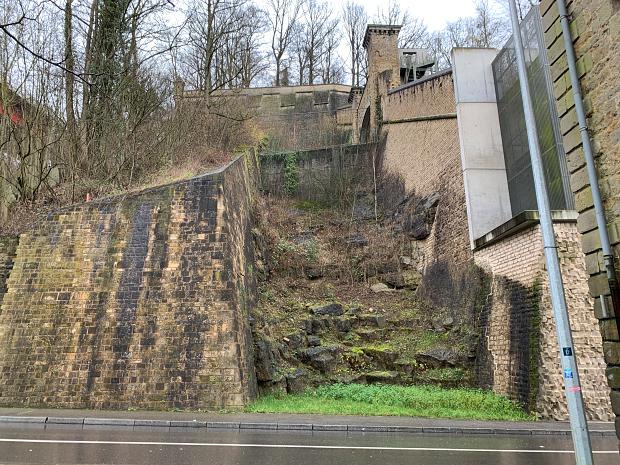
We continued along, walking under the soaring Pont Grande Duchesse Charlotte – a modern bridge spanning the whole valley from Kirchberg to Luxembourg City proper. At 75 metres above the river and 355 metres long, it commands the sky and intrudes on the background of most of our photos, a constant reminder of what century we’re in.
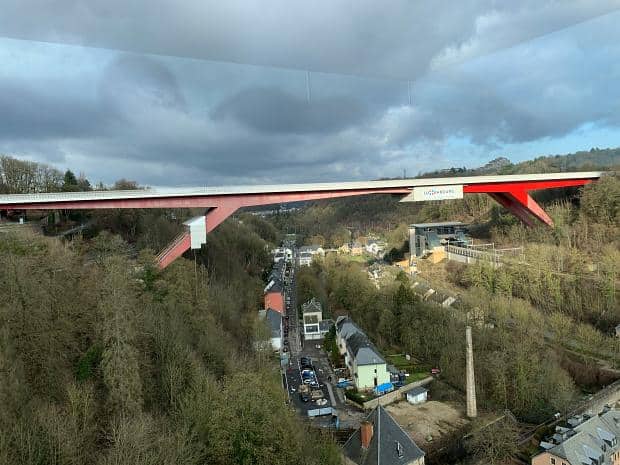
Pffaffenhall-Kirchberg Funicular
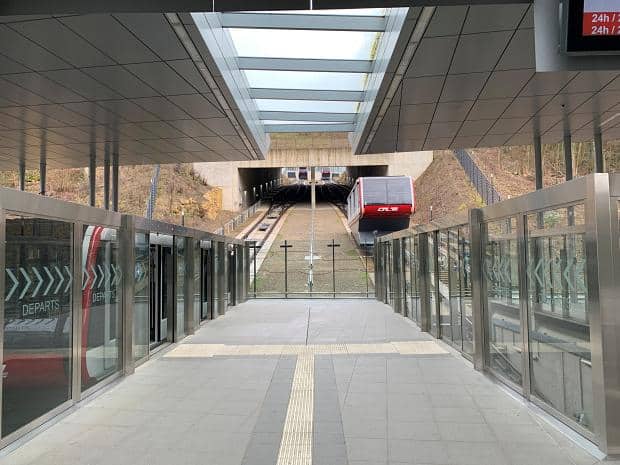
Just beyond the big red bridge is the Funicular to street level, or rather, first a glass walled lift to the rail station level from which the funicular travels a short distance to Kirchberg.
Taking full advantage of the day of free travel, we take the 200 metre trip and continue our walk up Avenue John F Kennedy towards the gleaming new office park.
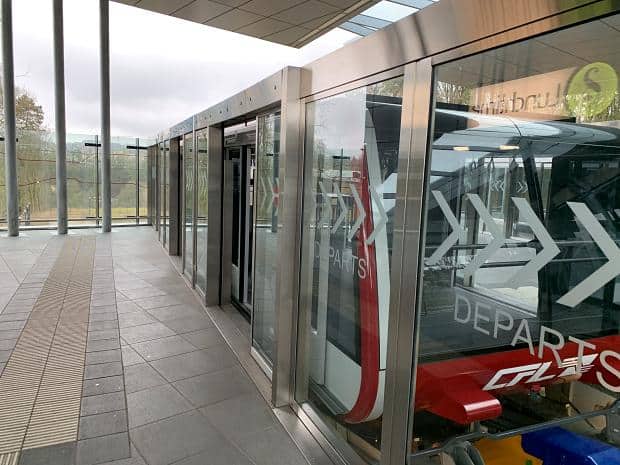
Kirchberg is a commercial suburb housing professional services and United Nations facilities, but we head right instead, towards the fortifications tucked into the hillside facing the City. We’re heading to the Museum of Modern Art (Musee d’Art Moderne – Mudam) in the remains of Fort Thungen.
Mudam
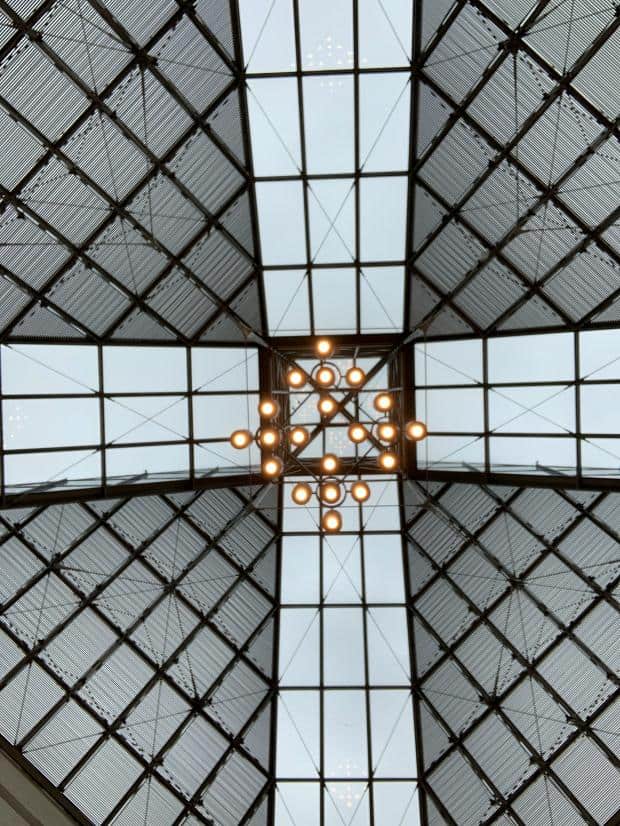
Modern Art is always a hit or miss affair I find, but there’s usually a nugget of gold to be found. My favourite exhibition is a room full of drums hung upside down and drumsticks arranged to appear to be playing autonomously – great impact lessened only slightly by the music that they’re supposedly playing includes other instruments – how a snare drum is supposed to sound like an oboe I’m not sure!
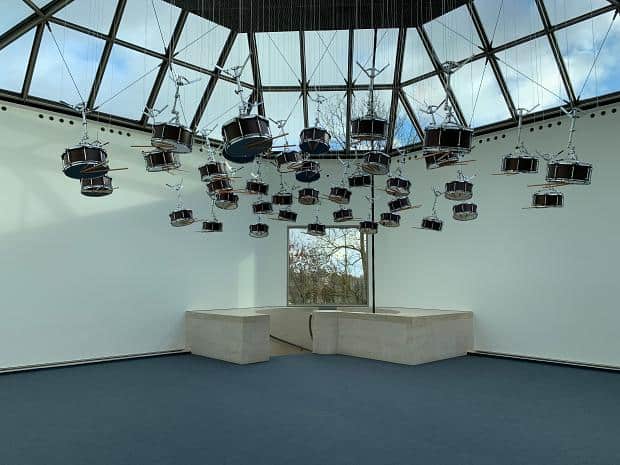
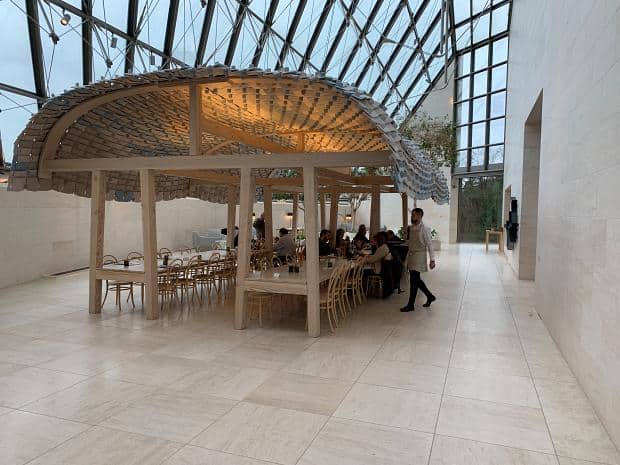
We stop mid visit to refuel on a Croque Madame and a Vegetable Quiche, each coming with a side salad and basket of small buns.
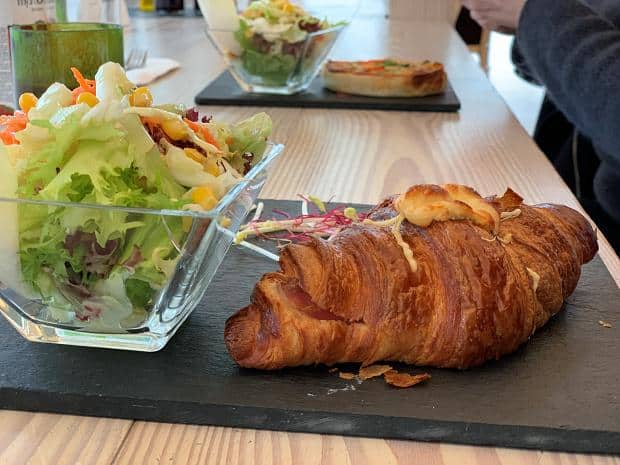
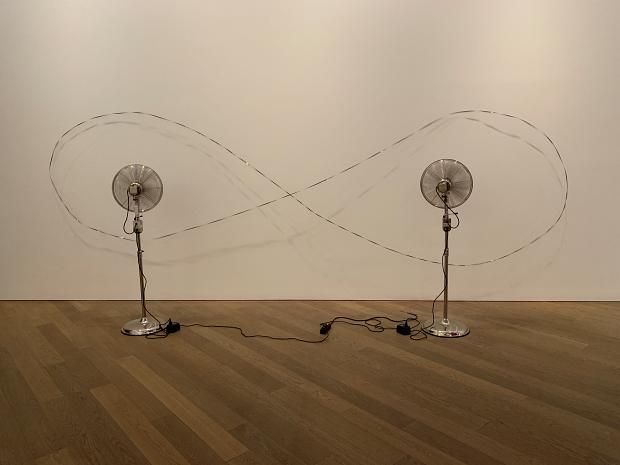
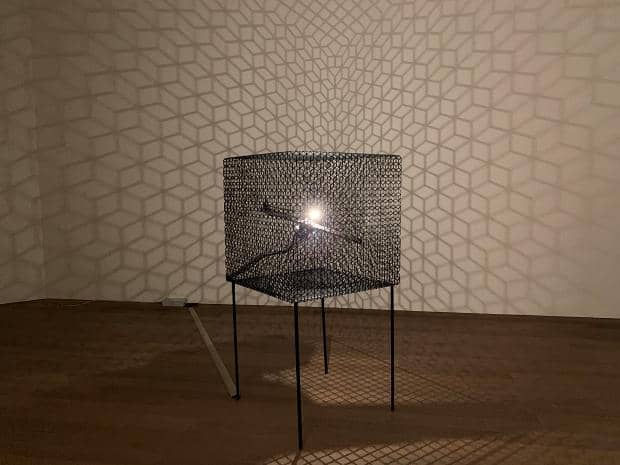

Meanwhile, back in the City….
We were all art-ed out, and so headed back into the City and made our way to the Luxembourg City History Museum. The central shopping avenue was pedestrian only and populated by the same shops you would get in any European main street. The sheep statue was different though…
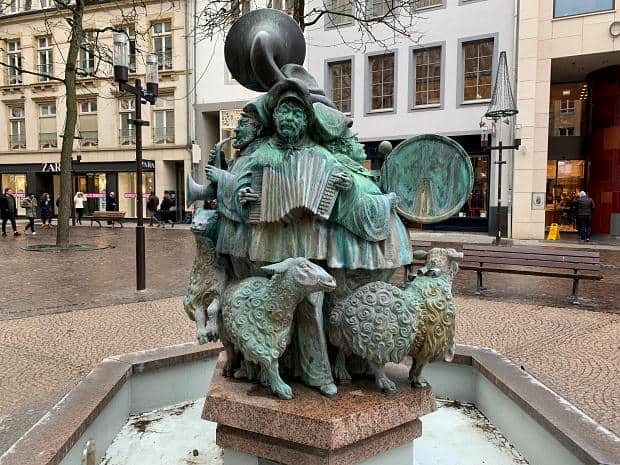
Luxembourg City History Museum
I must admit I had conflicting reactions to the Museum (€5pp): on one hand the wooden models of the city in the various phases of history was a really great way to see the growth of the city, as well as to appreciate the geographical layout of the terrain of the city.
But on the other hand there were great chunks of history that were ignored (the century ending in the 1910s), and others that were given disproportionate representation (a single room for each of the World Wars for example). I resolved to figure out why…
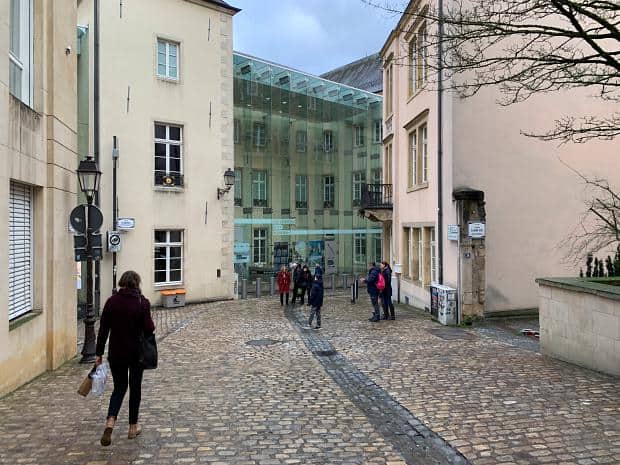

The museum did have some quirky parts – hidden away in a side room steeped in medieval stone, a swing, illuminated in LED lights swung autonomously back and forth, the lights flickering eerie shadows across the walls.

Afterwards we headed back to the hotel to freshen up for our evening, and we passed the Chocolate House all lit up and encased in creeping vines, looking quite sylvan. We’d had it recommended and resolved to return the next day.
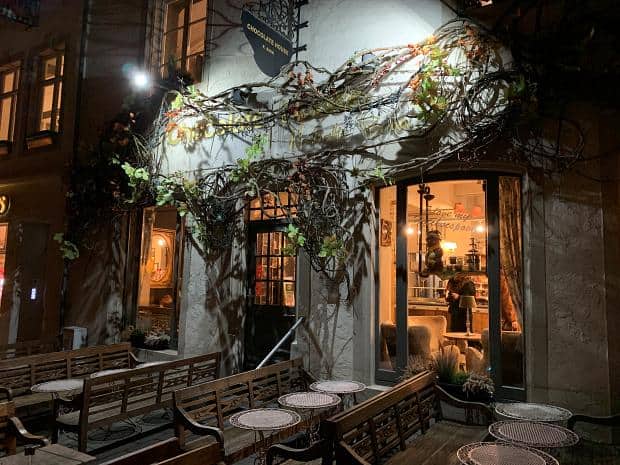
Also on the way back to the hotel, we passed an art gallery with a peculiar exhibit in the window. It looked for all the world like a dead wookiee lying on the gallery floor. Truly bizarre!
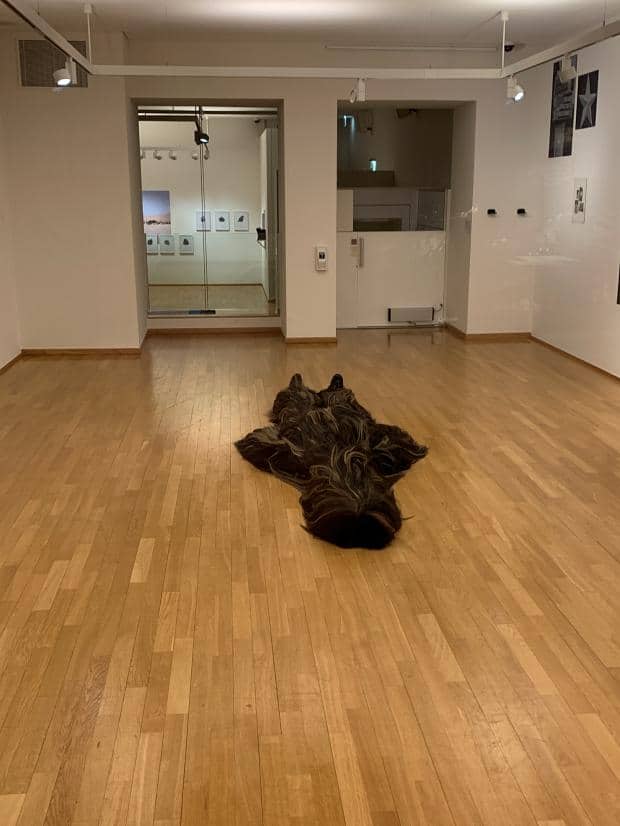
Grand Hotel Cravat
We’d arranged to meet Carlo Cravat, the owner and General Manager of the Grand Hotel Cravat, for a drink. It was great to get insight into a local Luxembourger’s culture and attitudes and to get a flavour for what life was like.
I raised my questions regarding the missing century from the museum and while we didn’t quite get to the bottom of it, Carlo did tell us some fascinating stories of the hotel from World War II – particularly pertinent given the upcoming commemorations of the 75th anniversary of the Ardennes Offensive. All too soon our time was up and we thanked Carlo for his time and candour and headed out into the cold night to find something to eat.
Sunday
The next day dawned fine – the clouds and rain from the previous day a distant memory and the city looked markedly better under bright blue skies.
Ascenseur Plateau St Esprit Grund
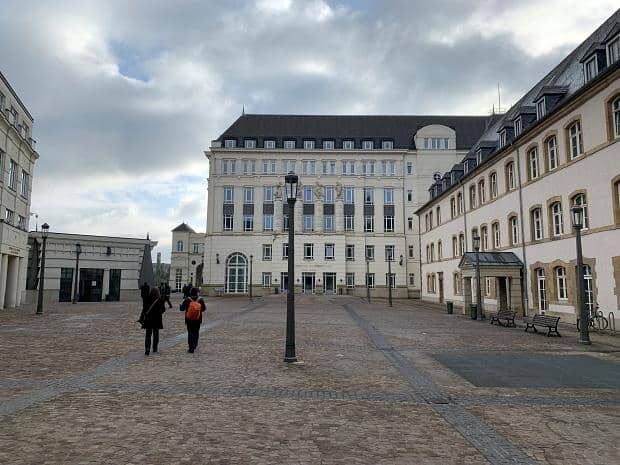
The Palace of Justice sits on a courtyard with a free elevator to Grund, the suburb at river level. I managed to avoid making the obvious joke equating Grund with ground, and we headed down in the aluminum walled passenger lift. A short walk through a concrete walled corridor spat us out into a charming square and we crossed the bridge towards the restaurants of Grund.
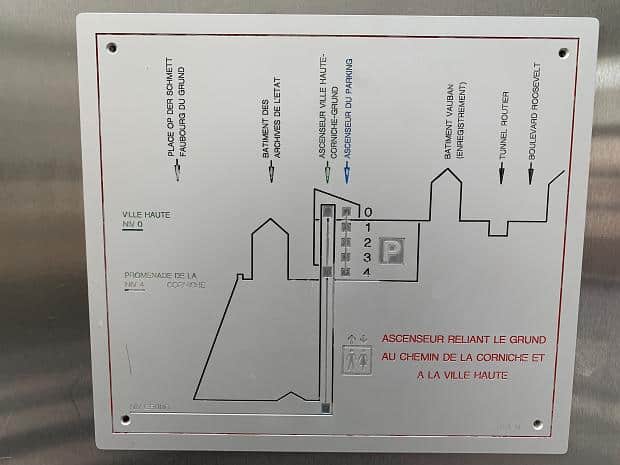
Grund in the Sun
One of our recommendations from Carlo Cravat was Scott’s Pub, and to fill the half hour before it opened for lunch, we headed up one side of the Alzette River and down the other.
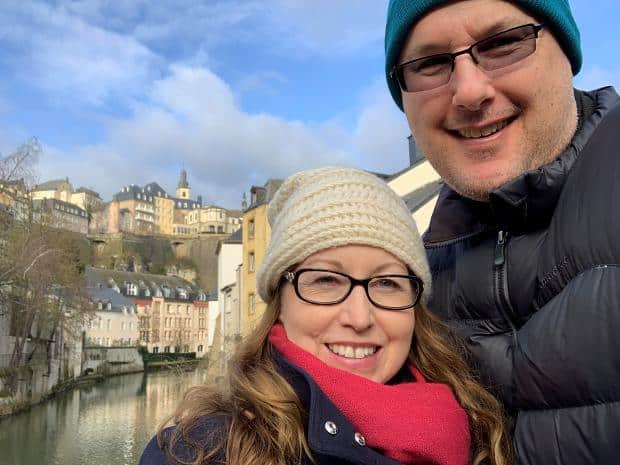
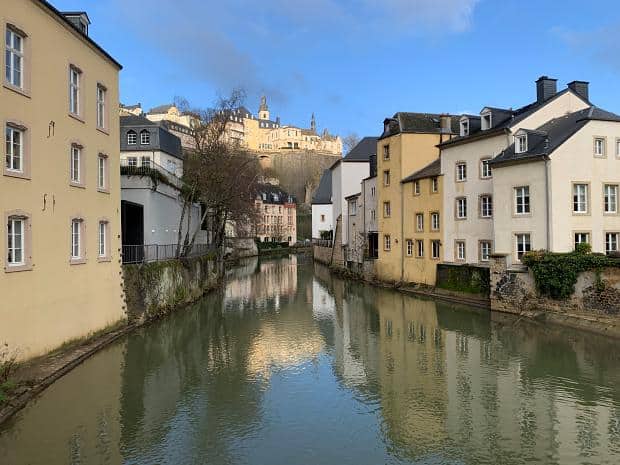
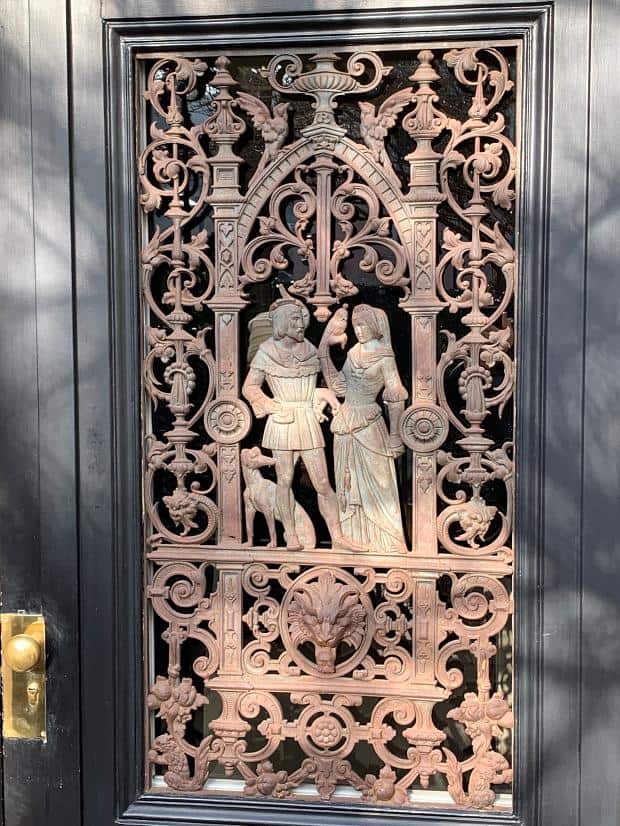


The biggest features on the south side of the river were the Eglise Saint Jean du Grund – a striking 14th century church and the Neumunster Abbey with its huge courtyard and now a burgeoning cultural hub. But for me the best part were the fortifications overlooking the river and the neverending series of weirs controlling the flow of the river.
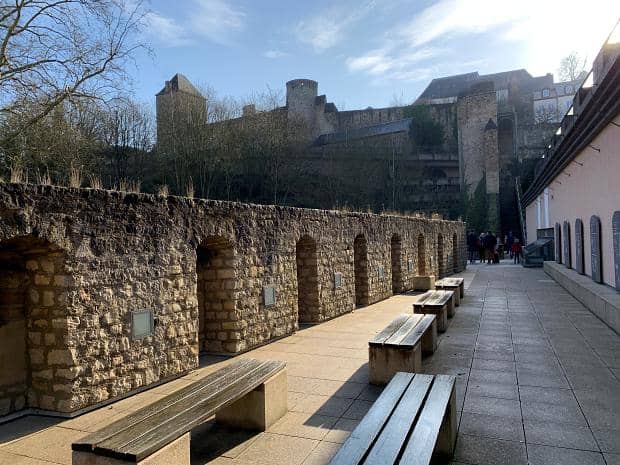
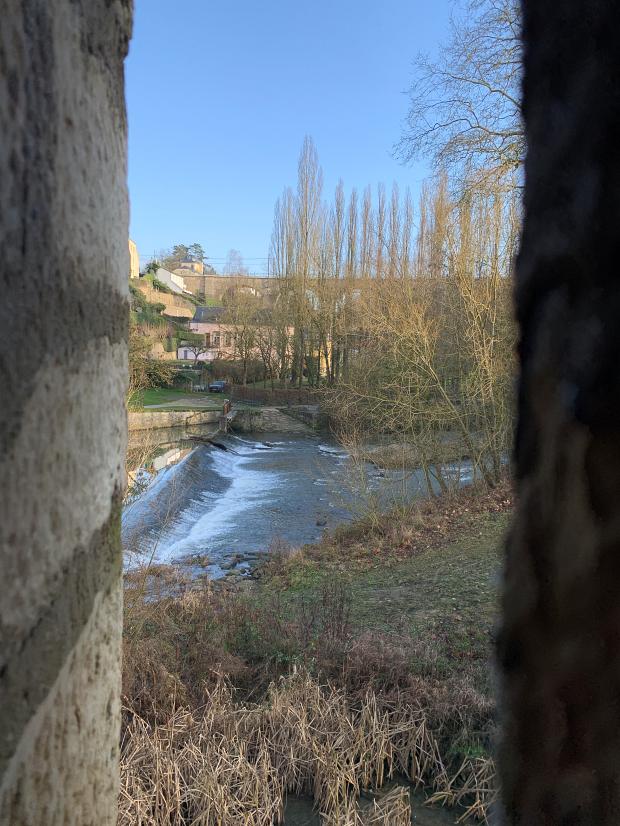
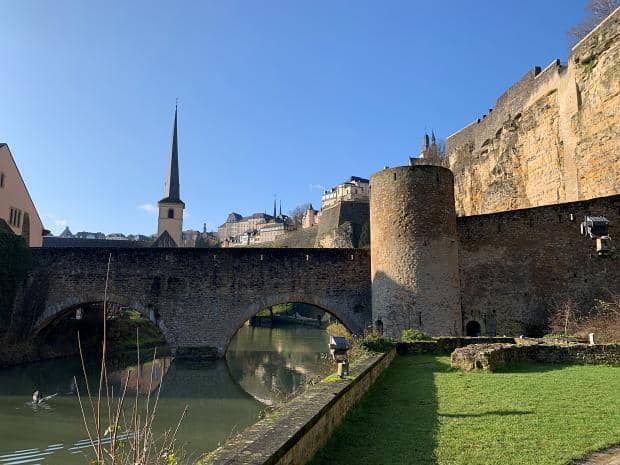

Scott’s Pub
At last we arrived back at Scott’s Pub and headed inside for some food. I elected to get the half rack of ribs while Ange had some fish tacos, both washed down with a small glass of the local cider.
SuperLeague Rugby League played on the big screens and the wait staff were a veritable United Nations, all clad in the uniform of black T shirt and jeans. The heat was on inside the pub and we were briefly tempted to sit outside on the deck overlooking the river, but comfort won out over scenery and we sat inside opposite the bar.

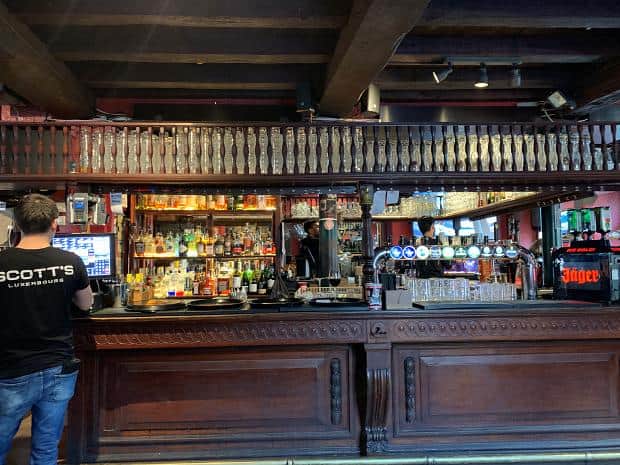
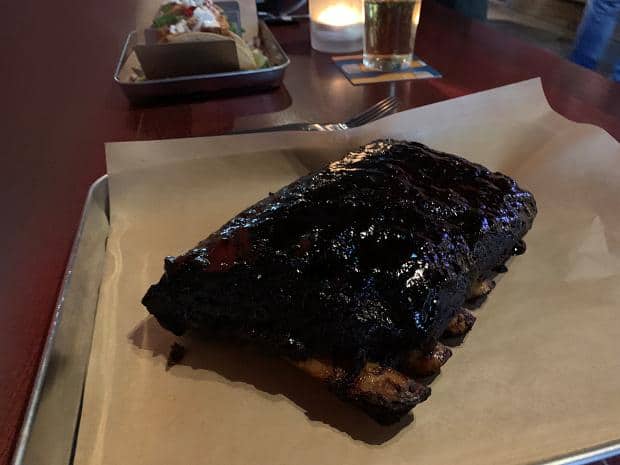

Under the Casement
After lunch we continued our walk towards the other Ascenseur, cutting the corner and heading under the Casements north, through the small township lining the road to Pfaffenfal.
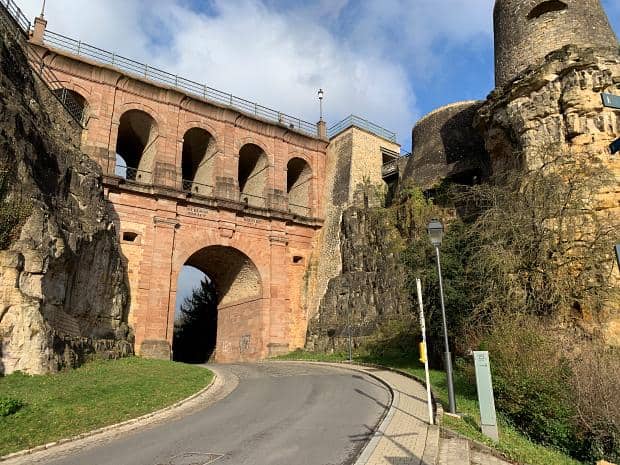
Pffaffenhall Ascenseur
The Pfaffenfal Ascenseur was a much more tourist friendly lift, glass walls allowing a view of the valley across to Kirchberg and south past the Casements to the plateau beyond.
When the lift arrived hardly anyone got off and we found that they were riding up and down enjoying the view. We didn’t have advantageous views (though mine was straight over people’s heads and hence fine), but by turning right at the top we found ourselves at the end of the long straight corridor connecting the lift to the top level, which conveniently ended in a glass-walled dead end.


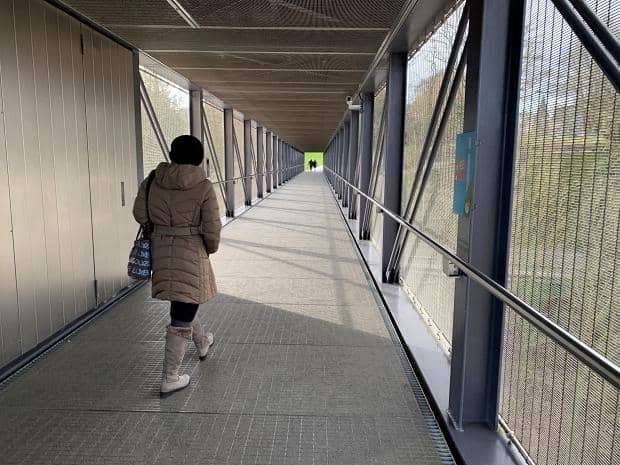
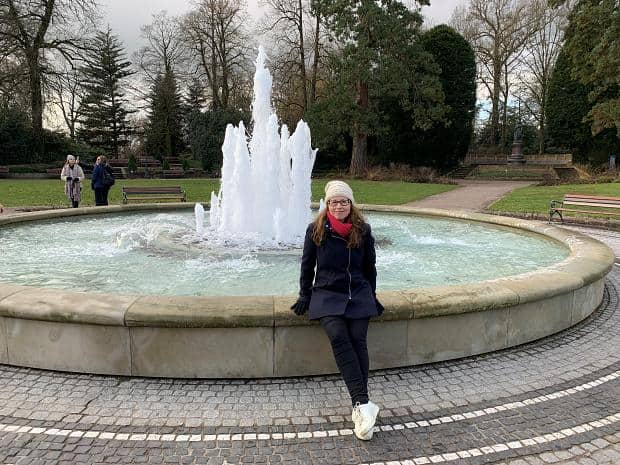
Onwards we walked, through the Municipal Parc of Luxembourg and its frothing fountain, on to the last of our Art Galleries, the Villa Vauban – Museum of Art of the City Of Luxemburg.
Art Gallery
Our ticket to the City Museum also got us into the Villa. It was very much a contemporary gallery, with exhibitions inviting lengthy pondering, some leaving you confused, some puzzled and some delighted.
The first exhibit we saw reminded me of my teenage bedroom, floor covered in newspapers, though my room certainly didn’t have pooh on the chair.
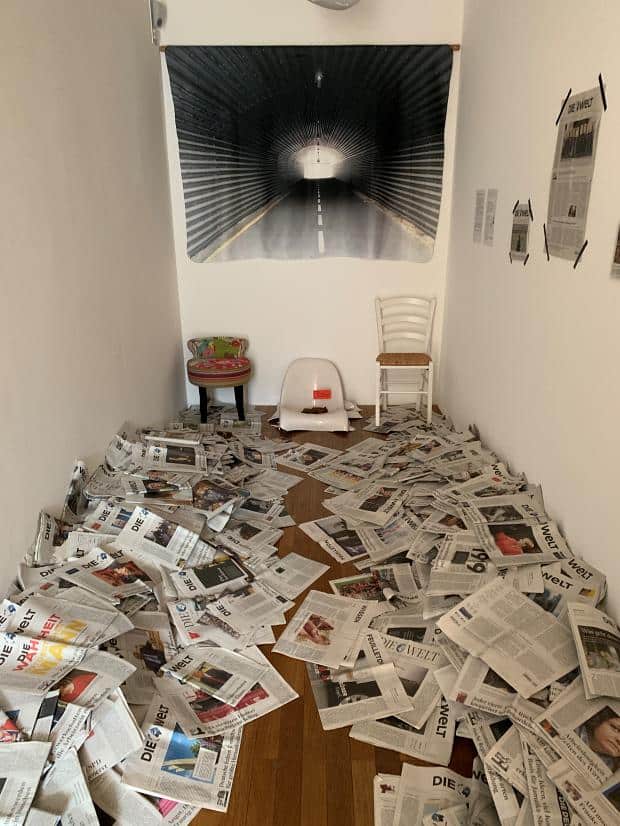
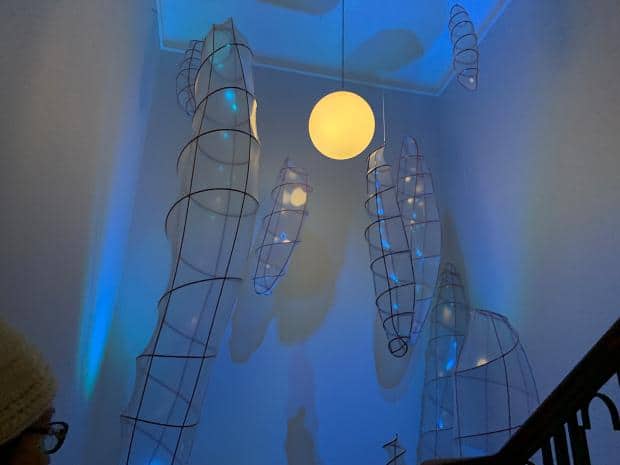
Other notable exhibits included a room which seemed as though someone had shaved a Wookiee, leaving the fur heaped up near the window. Very strange!
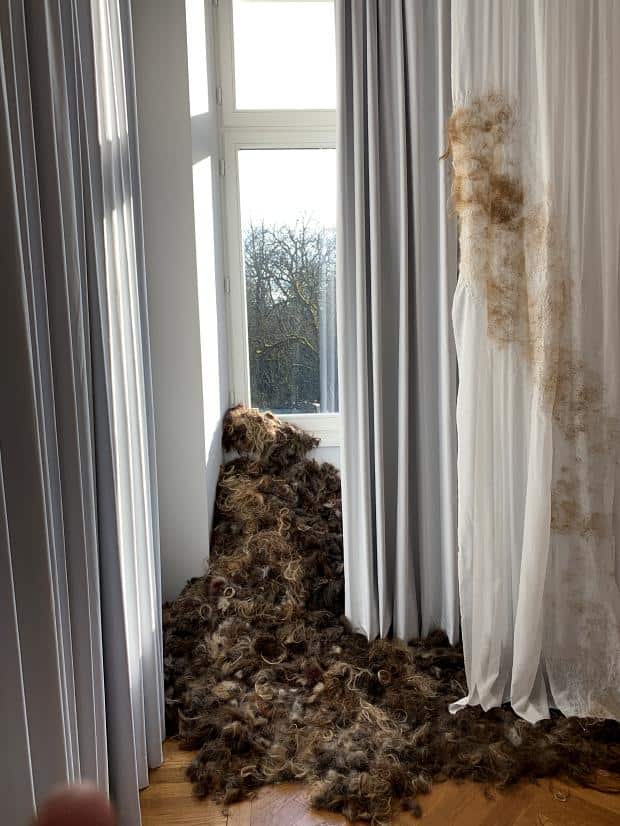
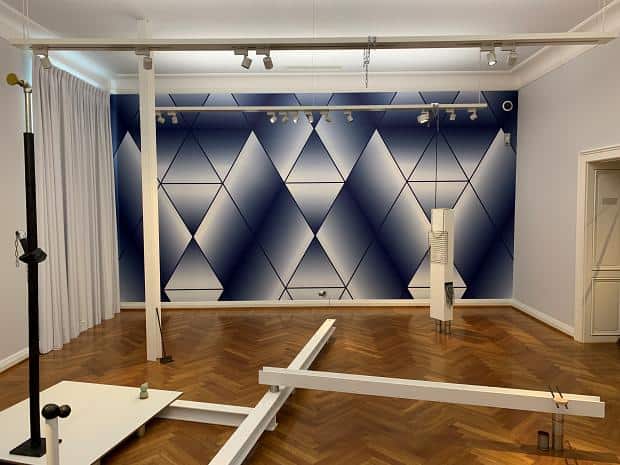
A much more dangerous exhibit actually drew blood! A pair of headphones were attached to a boxed garden of succulents and microphones were attached underneath to the plants. This meant that plucking the spines of the cacti and grasses allowed you to hear the musical notes that they produced.
By plucking multiple spines together you could create chords, but I was a little too enthusiastic and pricked my fingers on the prickles, eventually a single drop of blood welled up.
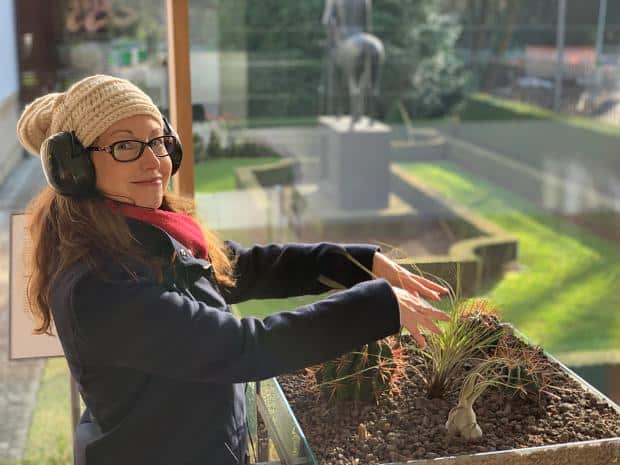
Along side the Symphony of Sanguine Succulents (my name for it) was a wall of slate tiles with similar microphones embedded in them. Again it allowed you to hear the taps and scrapes of finger on slate and while it was physically larger it was much more restricted in terms of musical output.
It was less dangerous though, with the tiles firmly attached to the wall and less likely to draw blood…
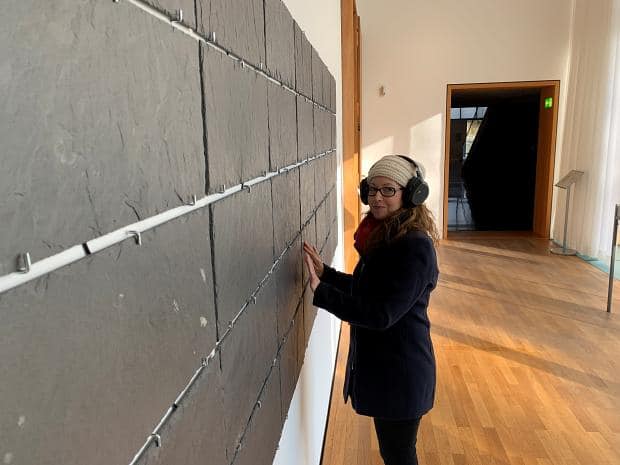
It has been my experience that photo booths at parties are always in demand, and an artistic backdrop with themed accessories and a camera set up was the icing on the cake for the Villa. The photos came out straight away and were stuck with magnets to the wall, forming a collage of people enjoying their trip to the Villa. Or not, judging by the grumpy looks on one or two of the photographed tourists.
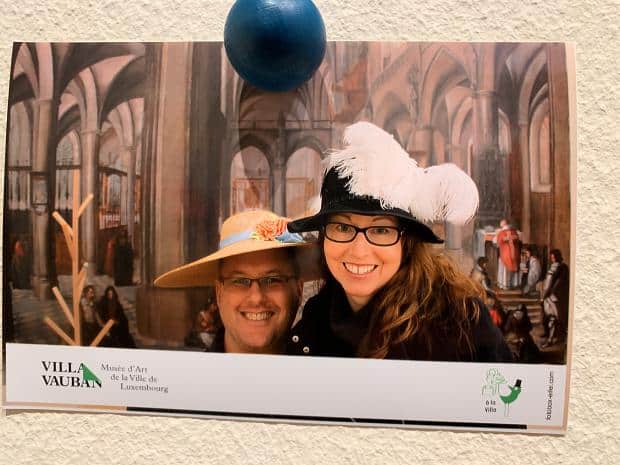
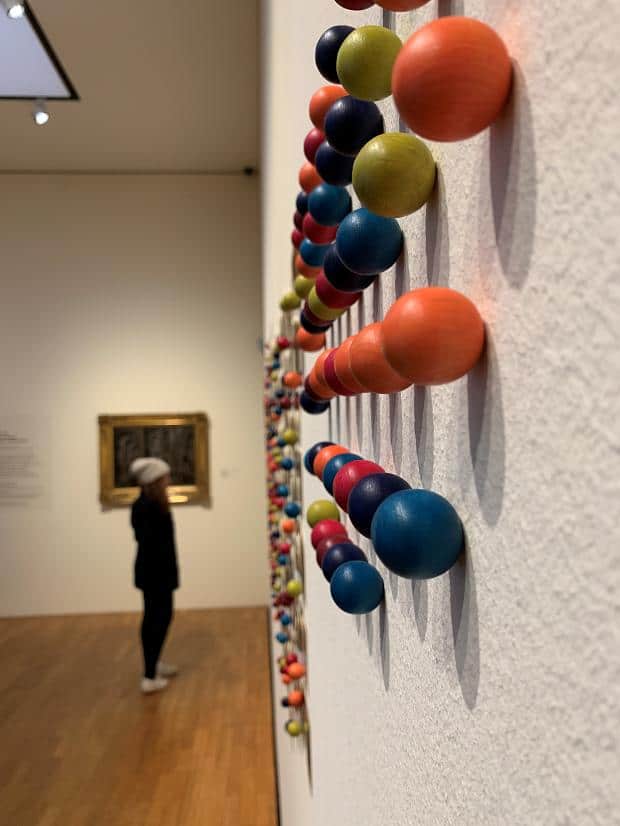
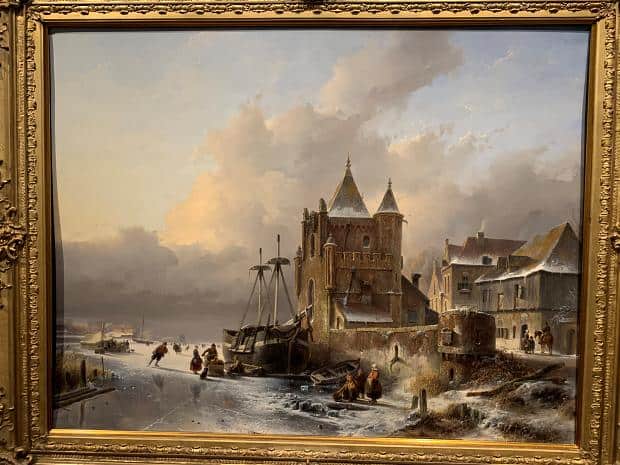
In the basement were some more traditional art pieces, with some scenes from the late medieval period including an almost photo-realistic scene of a canal in winter, skaters enjoying the frozen waters and a yacht at anchor going nowhere anytime soon.
Art History Gallery
The third and final museum/art gallery we went to was the Art History Gallery. Arranged in chronological order, we started near the bottom in the Gallo/Roman period and made our way to the top where a selection of Masters depicted biblical or contemporary scenes with various approaches to anatomical accuracy.
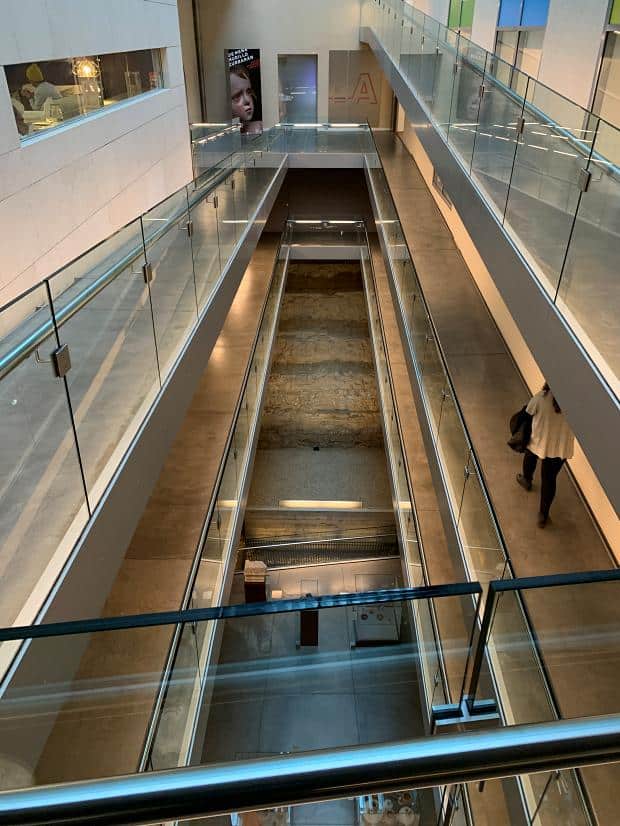

We’d walked a long way but fortunatley the Chocolate House was on our route back to the hotel and thus facilitated a short stop to refuel.
Chocolate House
The Chocolate House (or more correctly the Chocolate House of Luxembourg by Nathalie Bonn) is situated opposite the Grand Palace and consists of three floors. On the bottom you select your chocospoon which is a flavoured wodge of chocolate on a wooden spoon.
There’s also a cashier and the rest of the shop should you wish to takeaway, and a glass case full of cakes by the slice. Well, I say by the slice but the servings are VERY generous! After selecting the type of chocolate spoon you want you head up to one of the upper floors via a very narrow spiral staircase.
Upstairs you get seated at a table, if you’re lucky an intimate table for two, if it’s the weekend on a cold winters day and every tourist in the area has the idea to warm themselves up over a hot chocolate, then you might find yourself sharing a long bench with a bunch of new friends.
Either way a member of the wait staff comes over and takes your order for the type of hot milk you’d like (dairy free alternatives abound for a small premium).
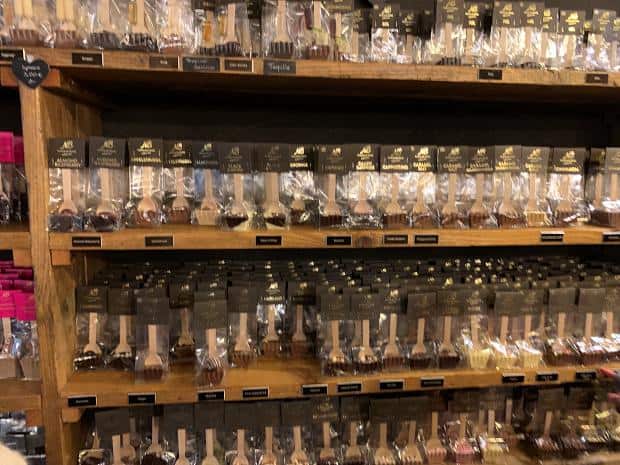
The milk arrives in mugs and accompanied by a dish with whipped cream and marshmallows and then you unwrap your chocospoon and dunk it into the hot milk, stirring until the chocolate melts.
If you ordered a slice of cake, that arrives too, carted up the same spiral staircase on a huge tray by the nimble wait staff. You’re left with a scrap of paper with your order on it and when you’ve finished you head back down the narrow spiral steps to the cashier on the ground floor where you settle up.
As we left I frowned and tried to figure out how they made sure nobody just walked out without paying. I guess everyone who comes down the stairs has to pass the cashier, so as long as they’re vigilant they’d ensure everyone pays…
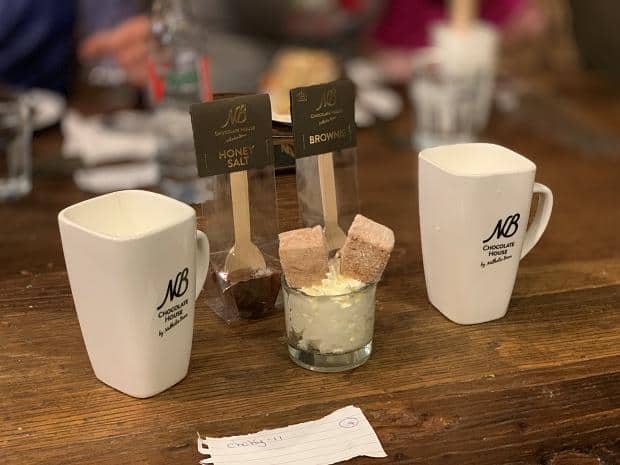
The Missing
And that ended our weekend in Luxembourg. After we got home I checked out the missing century from the history museum. Luxembourg had been occupied by Napoleonic France and after the 1814 Treaty of Paris Luxembourg lost a quarter of its area in the Second Partition and was to be ruled by the House of Orange (Netherlands).
Luxembourg lost a staggering 65% of its area in 1839 in the Third Partition after the Belgian Revolution successfully separated Belgium from the other Low Countries. The areas lost were all French speaking regions, making the remainder of Luxembourg more reflective of German influence. Furthermore, twenty percent of the population emigrated between 1850 and 1890.
The missing century I had noticed in the Museum reflected the country missing both land area, as well as people – no wonder it wasn’t noted.

